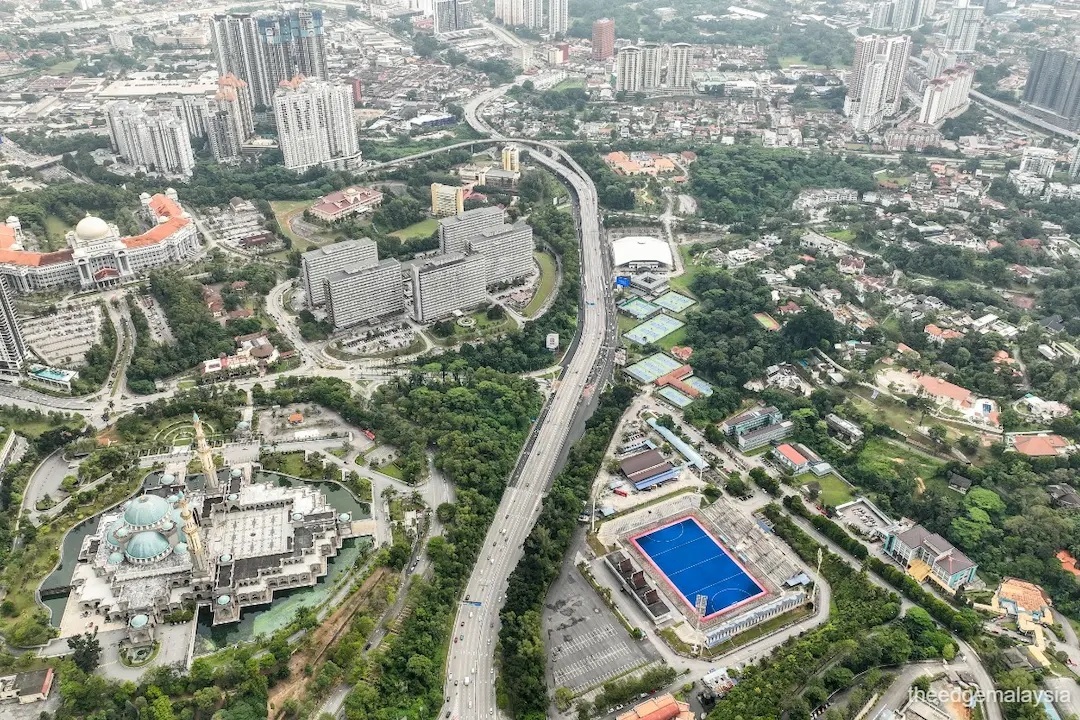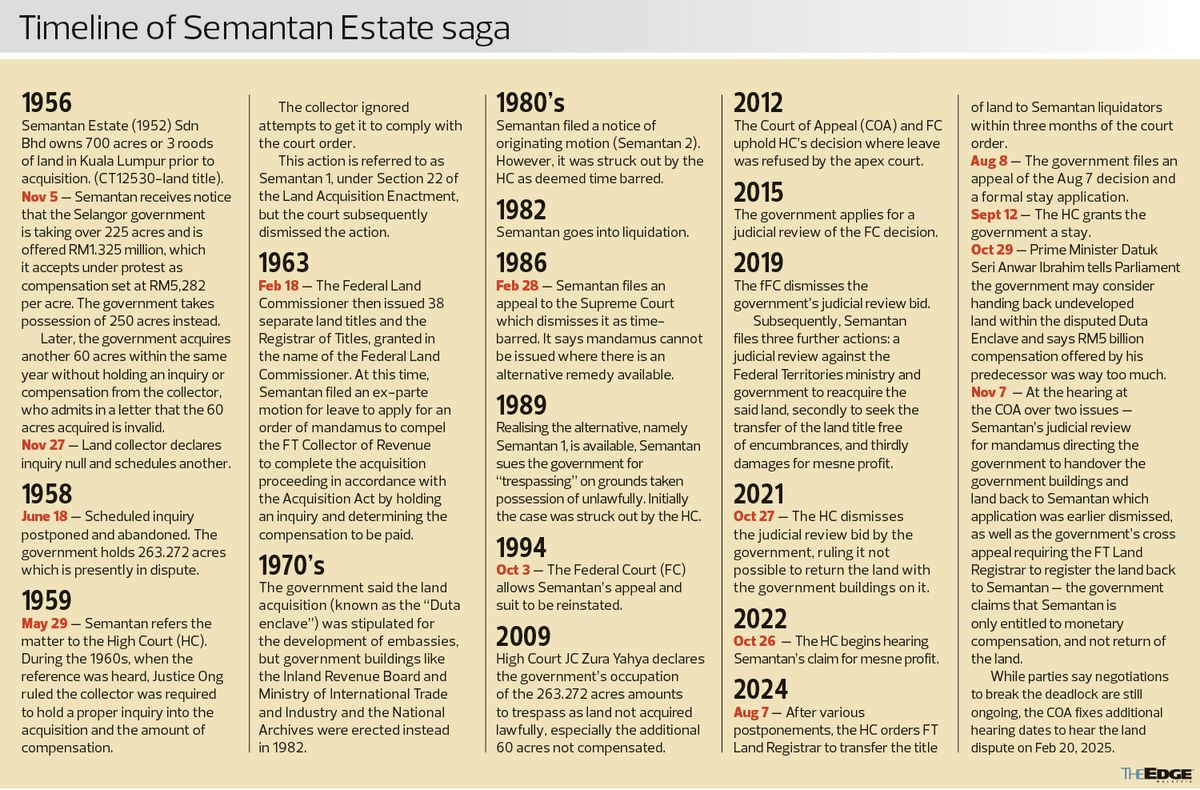
- Taking the stand as part of court proceedings on assessing "mesne profits" that is to be paid out to Semantan Estate Sdn Bhd, Nurzahirah Umar said that zoning was one of nine factors she considered when determining the market value of the 263.27 acres of land.
KUALA LUMPUR (July 10): A government valuation property expert said that she relied on planning or zoning information gazetted by the Kuala Lumpur City Hall (DBKL), while the private valuer for the plaintiff of the "Duta enclave" land had made conjunctures on possible future development.
Taking the stand as part of court proceedings on assessing "mesne profits" that is to be paid out to Semantan Estate Sdn Bhd, Nurzahirah Umar said that zoning was one of nine factors she considered when determining the market value of the 263.27 acres of land.
"Zoning factors or the development potential of the subject property differ. I assessed the subject property based on planning or zoning information gazetted by DBKL, which was designated as 'Residential with a density of 10 persons per acre' for valuations up to the year 2018," she stated in her witness statement on Thursday.
She added that for valuation from 2019 onwards, she used mixed development zoning with a plot ratio of 1:1.6, in accordance with the gazettement of the Kuala Lumpur City Plan 2020.
This means that for a 10,000 sq ft plot of land, a 1:1.6 ratio allows one to build 16,000 sq ft of total floor space. The floor space includes all usable floor areas, but excludes things like lifts and stairwells.
"The plaintiff’s valuer relied solely on approved development projects in the surrounding area, while disregarding the zoning regulations currently in force for the subject lot.
"This is inaccurate and unacceptable, as it is based purely on assumptions and speculative projections regarding the types of development that could be carried out on the subject property," she added.
Mesne profits are “the rents and profits which a trespasser has, or might have, received or made during his occupation of the premises, and which therefore he must pay to the true owner as compensation for the tort which he has committed”, according to Jowitt’s Dictionary of English Law.
It is the government's stance that its valuation of mesne profits is RM289.846 million, a mere fraction compared to the maximum RM13.242 billion valuation by Semantan Estate’s appointed valuer.
Trial to continue in August
However, at various junctures during cross-examination, when asked by Semantan Estate’s counsel Ira Biswas if zoning is subject to change and not infinitely static, the witness could not give a conclusive answer.
Biswas: From 1957 to 1961, the land [in question] didn't fall under the responsibilities of any local-planning-authority.
Nurzahirah: Disagree.
Biswas also highlighted that documents regarding zoning information for specific transactions were not included as proof for Nurzahirah's valuation report.
Nurzahirah also said that she had done valuation for the period of 2012 to 2021. She said that she relied on AA Wragg's 1956 base value of the land and government valuer Halimatul Saeidah Abd Ghani's reports for the years 1957 to 2011. Halimatul had also testified in the proceedings previously.
In her statement, Nurzahirah said that her "base value" was RM3,784 per acre, while the Semantan's valuer used RM6,000 per acre.
She added that she relied on Wragg's report as he was the sole valuer then and best understood the original physical condition of the property and market conditions at that time.
"Compared to the plaintiff's valuer, who conducted a retrospective valuation and lacked a clear understanding of the actual condition of the subject property at the material time, the base rate of RM6,000 per acre that was applied is excessively high," she added.
However, during cross-examination, Biswas had highlighted that this assessment was not based on the witness' own first-hand knowledge but on a reliance on someone else's report.
Biswas is still in the midst of her cross-examination. Proceedings are slated to continue on August 6.
The land in question was acquired by the government in 1956 for the price of RM1.32 million under the then-Land Acquisition Enactment, for the purpose of developing a diplomatic (Duta) enclave.
In 2009, the High Court ruled that the government had trespassed on the land, and in 2012, this decision was upheld by the Court of Appeal and the Federal Court.
In November 2018, a Federal Court bench, led by then-Court of Appeal president Tan Sri Ahmad Maarop, dismissed the Malaysian government’s application to review the 2012 decision, resulting in that judgement remaining intact.
Semantan Estate claimed that it had retained its beneficial interest in the land in Mukim Batu, which it alleged the government had taken unlawful possession of, and that the government should pay the company mesne profits as damages for trespassing, with the said damages to be assessed by the court.

Does Malaysia have what it takes to become a Blue Zone, marked by health and longevity? Download a copy of EdgeProp’s Blueprint for Wellness to check out townships that are paving the path towards that.





